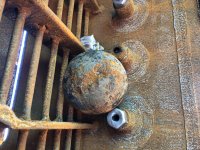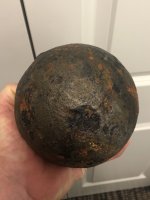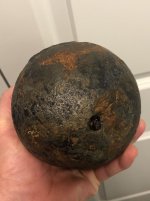Rseod
Newbie

I responded to an incident on a dredge ship working in the Atlantic, near Virginia Beach, found this stuck in the ships dredge head. It’s approx 5” in diameter and weighs 17.2lbs (bathroom scale). The research I’ve done since retrieving it leads me to believe it’s a French 18lb revolutionary war cannonball, even cooler is that there were two ship battles fought in the area it was dredged from, both between the French and the Brits... So, I’m hoping somebody here can tell me that’s plausible, or if I’m wrong.
Amazon Forum Fav 👍
Upvote
0







